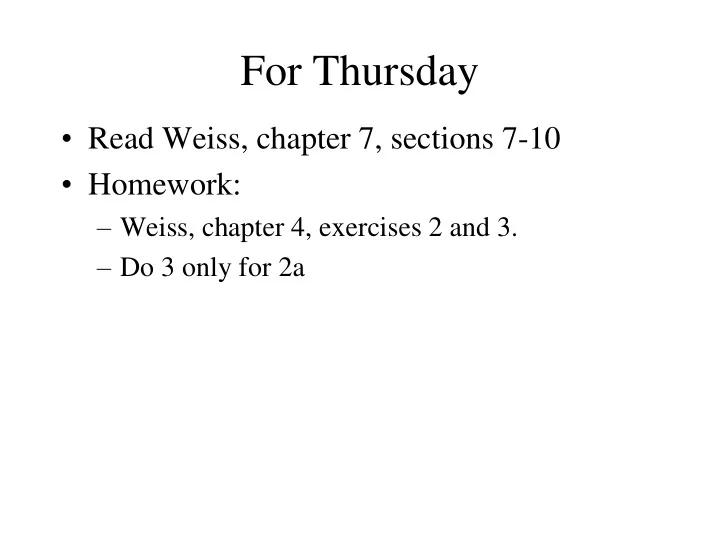

For Thursday • Read Weiss, chapter 7, sections 7-10 • Homework: – Weiss, chapter 4, exercises 2 and 3. – Do 3 only for 2a
Programming Assignment 1 • Any questions?
Homework
Priority Queues • Same basic operations as a standard queue: – insert an item – delete an item – look at first item – check for empty queue • But, order of item removal is not based on the order of item insertion (as in stacks and queues) • Instead, each item has a priority associated with it
Priority Queue ADT • AbstractDataType MaxPriorityQueue { instances : finite collection of elements; each with a priority operations : Create() Size() Max() Insert(element) DeleteMax() }
Uses of a Priority Queue • Operating systems • Best first search • Simulations • Others?
Implementation • Unordered linear list – Insert time – Delete time • Ordered linear list – Insert time – Delete time
Min Tree • A tree (binary or not) • Each child has a value bigger than its parent • Or each parent has a value smaller than any of its children (if any) • So the smallest value in the tree is ? • Maximum trees are simply reversed
Heaps • A minimum binary heap is a min tree that is also a complete binary tree • Usually represented in an array • Height of a complete binary tree in terms of N?
Heap Operations • Insert • DeleteMin • DecreaseKey • IncreaseKey • Remove • BuildHeap
Sorting • Importance of sorting • Three basic simple sorts – bubble (or exchange) – selection – insertion
Bubble Sort • Concept is to bubble the largest to the top (or the smallest to the bottom) • Also called exchange sort. • Naïve vs. improved bubble sort.
Selection Sort • Basic concept to the find the smallest (or largest) remaining element and put it in place.
Insertion Sort • Basic concept: – Conceptually split the list to be sorted into two parts: one that is sorted and one that is not – Repeatedly insert the first element from the unsorted part into the sorted part.
Performance of Sorting • What is the performance? • Each sort would be the best choice (of the simple sorts, at least) in certain situations — what situations? • What’s the space cost of these sorting algorithms?
Shellsort • What’s the concept? • h-sorting • increment sequence • Shell’s sequence {1, 2, 4, 8, …} • Hibbard’s sequence {1, 3, 7, 15, …} • best sequence known { 1, 5, 19, 41, 109, …}
Performance of Shellsort
Heapsort • What’s the concept?
Heapsort • Use max heaps instead of min heaps • Use BuildHeap to turn the array into a heap • Use deleteMax to remove items from the beginning of the array, continually moving them to the end of the tree
Performance of Heapsort
Recommend
More recommend